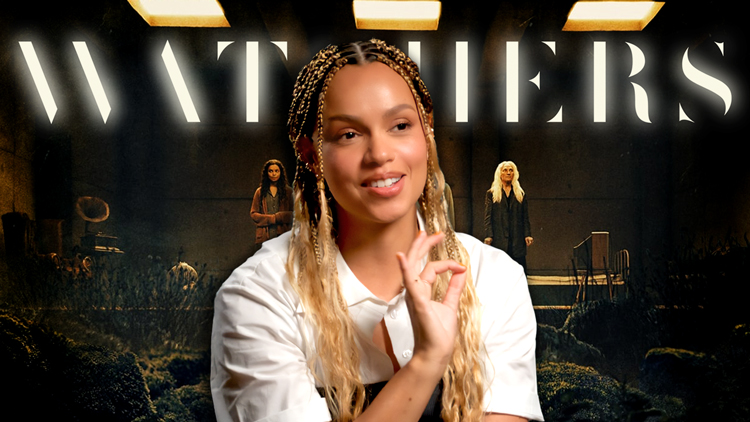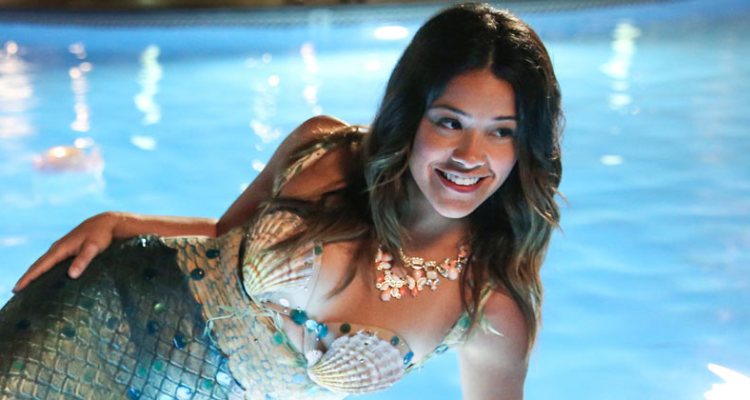By Jorge Carreón.
This week’s debut of “Jane the Virgin” on The CW may have been reported as offering “OK” ratings. But, the fact that the series is even being presented a major US television network is enough for me to start a parade through Hollywood.
Stereotypes aside, it seemed like forever that Latinos could only be seen center stage as a deceased rock star or a revered tejano idol. But a new wave of Latino artists is cresting; giving credence to the hope that we are no longer just supporting players added to films and television series as “flavor.” And, standing tall among the pack is the indefatigable Gina Rodriguez.
Rodriguez first caught my eye in the cult fave ABC comedy series “Happy Endings,” turning in a memorable guest spot as Rita, Casey Wilson’s grifter first assistant. As luck would have it, I would get to meet Rodriguez while producing the broadcast publicity materials for the Sundance hit “Filly Brown” in early 2013. To say the least, it was an interview to remember. Unfiltered and passionate come to mind, something that fueled her breakout performance as Filly Brown. Her take as a young Chicana rapper did not go unnoticed, leading Rodriguez to score her second indie film lead that year in “Sleeping with the Fishes.”
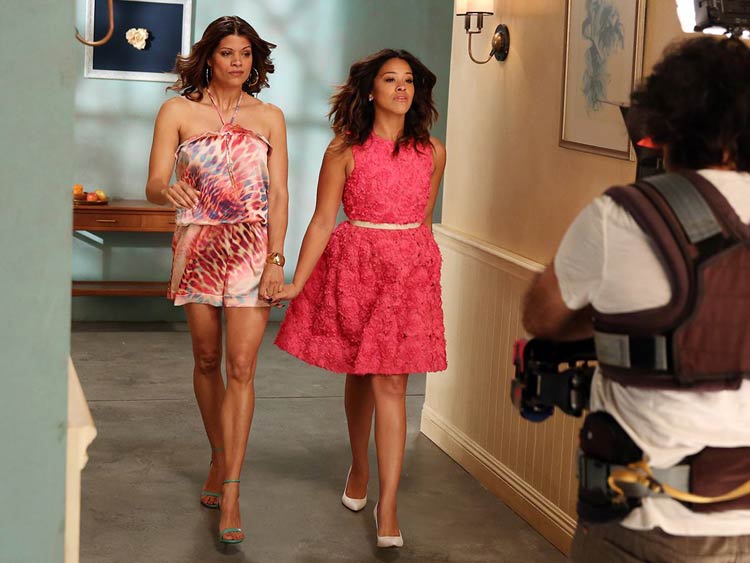
Even by Hollywood standards, Rodriguez’s ascent to mainstream attention since our first encounter was pretty swift. Her performance as Jane Villanueva in “Jane the Virgin” was instantly – and rightfully — pegged as “one to watch” by TV critics and bloggers. As for the show, it also received just acclaim, particularly for taking us away from such novela hybrids as “Desperate Housewives” and “Devious Maids.” (“Jane” is closer to “Ugly Betty” in spirit.) Hopefully, it is not just the Latino community that will continue to champion the series, one of the most engaging and diverse shows on the air in a long while. (In other words, set your DVR. Now.)
Our paths would meet again, this time for a follow-up interview for “Fishes,” which unfortunately would not be published. But, I have been keeping the transcript of our insightful hour-long interview in the vault, knowing it would have its moment. With most cities “seeing pink” of late, thanks to the CW’s aggressive marketing push for “Jane The Virgin,” I pulled it up for a new read. As with our discussion over “Filly Brown,” Rodriguez and I logged plenty of minutes on the subject of being Latino in Hollywood. And, it was as unfiltered and passionate as our first sit-down interview.
JORGE CARREÓN: You’re part of a generation that is helping mainstream media redefine its perception on ethnicity. Does this mean we are living in an age where it is finally better to be a non-white actor?
GINA RODRIGUEZ: Yes, yes! I would agree with that 100%. I would love to continue to push that school of thought that I’m part of a generation that is going to redefine the way we look at Latinos in the industry. We created these social norms of “This is the way a Latina looks” or “This is the way a Latina talks.” Now, I’m only specifically only talking about a Latina and only specifically talking about being a woman. But we’ve created social norms that contribute to people not living to their full potential. I would love to be part of the generation that says, “An ingénue, a leading lady doesn’t have to be 100 pounds with her bones sticking out of her back.” The blonde girl with blue eyes doesn’t only have to tell a story that we all have lived. We should no longer say that a Latina can’t be goofy looking or quirky or funny or have a normal American story. I think that with “Filly Brown” and with “Sleeping with the Fishes,” we contributed to redefining those things. And I would love to continue to do projects that only redefine our culture, only change the way we view our culture. Because otherwise what am I doing this for?
JORGE CARREÓN: For a several generations of Latinos, finding role models in mainstream media was a challenge. Who did you look up to growing up? How did that play a role in your wanting to become an artist?
GINA RODRIGUEZ: My older sister is a banker and my other sister is a doctor. There were a lot of people in my life that have been role models. They said, “Listen, if there’s not a box that you fit in you can create a new one.” I’ve had role models in my life. But they weren’t really on the screen. I’m an artist. I was born dancing and wanting to tell stories, wanting to be in the spotlight, wanting to be the vessel for somebody’s funny joke. But, I would look on the screen and I would never see myself. I never saw a girl that was “normal,” who wasn’t an Amazonian princess, you know? I had problems and had insecurities and vulnerabilities. And I didn’t see that. I saw women that inspired me like Rita Moreno, Celia Cruz. I had Meryl Streep, Oprah. I had many women that inspired me, but they didn’t look like me. I don’t look like JLo. I don’t look like Salma Hayek. I don’t look like Penelope Cruz. These women are gorgeous, Jorge. There’s just no denying that, but we’re all beautiful in very different ways. We’re all strong in very different ways. I didn’t necessarily see them play strong women of power. I didn’t see them play women that are professional. And growing up, I needed to see this to know it’s possible. Unfortunately we are a product of that. You always believe what your eyes can see.
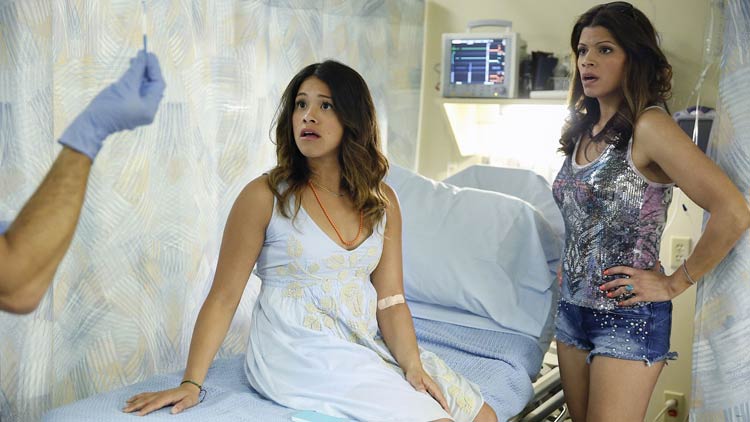
JORGE CARREÓN: What troubles me is how the Latino community does tend to champion reality figures more than the artists striving to “elevate the race,” so to speak.
GINA RODRIGUEZ: We have a lot of responsibility as artists. Now it’s, “Oh my god! I’m so pretty! I’m going to be famous! I’m going to buy Louis Vuitton and I’m going to get drunk and I’m going to get DUI’s and I’m going to get half naked on the cover of Maxim.” That is not responsibility. Our industry is so vital to the education of children these days. When we wake up in the morning and it’s right away: What’s the prettiest thing in the magazines now days. What’s going to make you look hot? What’s the color of the season? What’s the color of my lips? What’s trending? Right away we start placing these social norms that the entertainment industry has created. And because of that I realize there is a huge responsibility that comes with being an artist. It’s not just the fancy cars and the being famous and, “I saw your movie you’re so cool!” It’s about what I do, what I have to say when I’m put in the position of having hundreds of thousands of people listening to my voice. What am I putting out there that is responsible and right? What projects am I taking that really make people stop and think, “Oh see, Latinas can do better” or “Oh, there she goes. Another hoochie, another half naked girl.” What do we do? The decisions we make, the choices we make, and the words we put into the world. What we type on Facebook and Twitter, it matters! And mind you, I don’t have a big old fan following, but I am very careful with what I put out there and very cautious to the words that come out of my mouth.
JORGE CARREÓN: It’s bad enough that the Industry tends to put all Latinos under one heading. But, are there still prejudices within our own ranks, too?
GINA RODRIGUEZ: You nailed it right on the head when you talked about our different ethnicities being put under one umbrella. Hollywood puts us under these umbrellas because they’re easier to deal that way. You don’t want to market to this small Korean group, you don’t want to market to this small Ecuadorian group. You want to market to the whole Latino group, market to the whole Asian community, right? What happens with the white culture, the black culture here in America is that they are very much more uniform than the Latino culture where we are divided so much. We really have to understand that we’re being looked at as just one group. When one Puerto Rican movie fails, when one Mexican movie fails, we all fail. We all fail if we all fall to that, too. I think that there is just a lack of education. I wouldn’t say we’re our own worst enemies because when I go to these organizations like NALIP and to these different film festivals that are Latino and seeing these artists together you really do feel a community. You feel camaraderie, this celebration, if you will, that we are progressing. But there’s a need behind the scenes. There’s a need for more Latino directors, Latino writers, Latino DP’s. I’ve worked with so many talented ones. I know they exist. The Latino community needs a movie like “Think like a Man.”
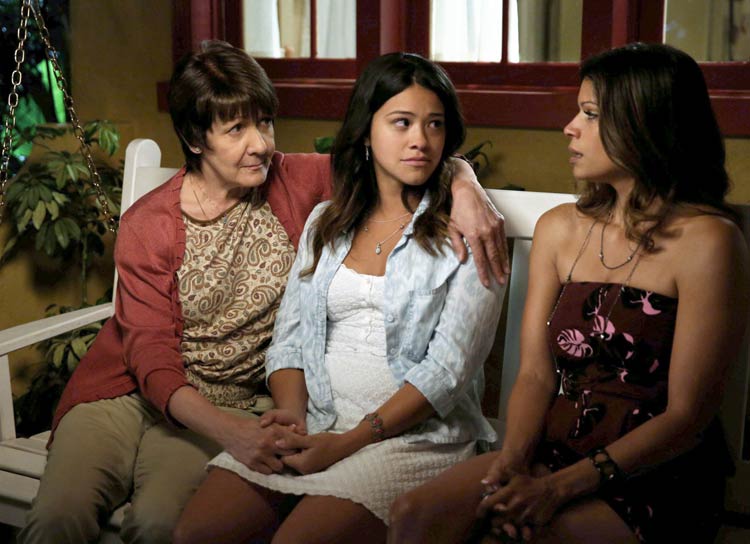
JORGE CARREÓN: I find it really interesting that the Industry, for all its talk about paying attention to what the audience wants, keeps missing out on golden opportunities. People do want to see narratives that relate to them, and not just from a cultural perspective, either.
GINA RODRIGUEZ: So badly, so badly. Do you know how often I talk to women that are like, “I just want to see a normal woman that isn’t two pounds, that doesn’t have fake titties up to her chin!” At the same time there are insecure men that are like, “Oh my god that woman is gorgeous!” and “Oh, that woman’s really skinny and that’s not attractive!” Yet we still keep putting the same thing. Being naturally skinny is a phenomenal thing. But when these women are starving themselves, like working out to no extent? There is no way you are fulfilling your purpose when you are restricting yourself from your full potential, when you are feeling like you are not enough. I think we are very hungry for that.
JORGE CARREÓN: During our previous talk, you mentioned how there was something in your own life that helped shaped some of you roles. Is there strength to be gained by mining the territory of being vulnerable?
GINA RODRIGUE: I found beauty in vulnerability. I think as a woman, and as a woman in this industry, you constantly have to be like strong and tough and thick skinned. You don’t have to be super strong and tough and a beast to be liked or to be loved. I think that we have a misconception that men will run all over us if we are weak, if we show our delicacy. I actually came out of one experience a little softer and I like that. I like that I’m not afraid of my weakness anymore or my vulnerability.
JORGE CARREÓN: It’s going to be interesting how this next year is going to affect your career. What do you want all of this to mean, Gina? What’s your endgame as an artist?
GINA RODRIGUEZ: When I take a role, I take it with a heart of gold. Since I was able to break through that door, I know I have to keep going. I know I can’t stop here. I know that as much as these words are heavy and scary to say, I have to do this. I have to keep my integrity and I have to do what I was meant to do. A lot of people look at that TV screen and think, “I’m not there, I don’t exist” or “Oh well there’s no way I can do that because nobody looks like me. Nobody came form where I came from, there’s no way I can succeed.” I came up from the ‘hood of Chicago. I grew up wearing my sister’s clothes until I was 16. Now live off acting and I am smiling every day of my life. So if I can do it, they can do it 10 times better! My purpose is to let them know that. It’s going to be a really hard fight. But, at the end of the day, that’s what feeds me.
“Jane the Virgin” airs on The CW, Mondays at 9pm.




